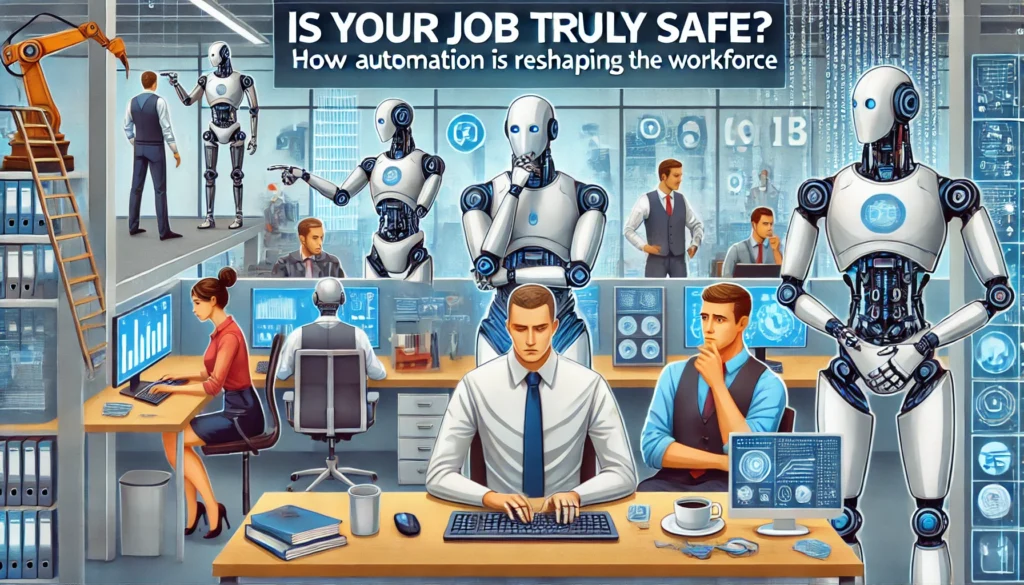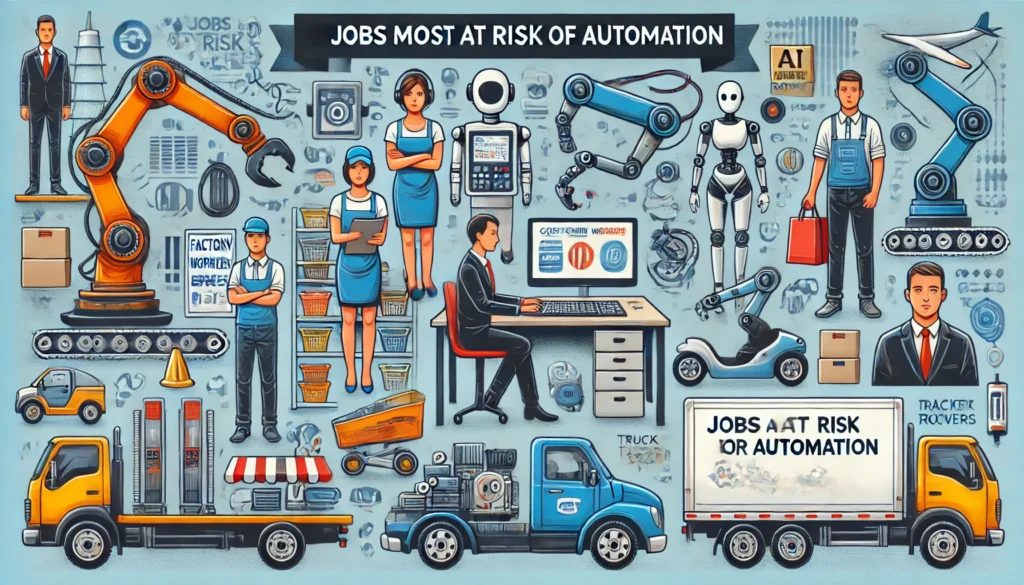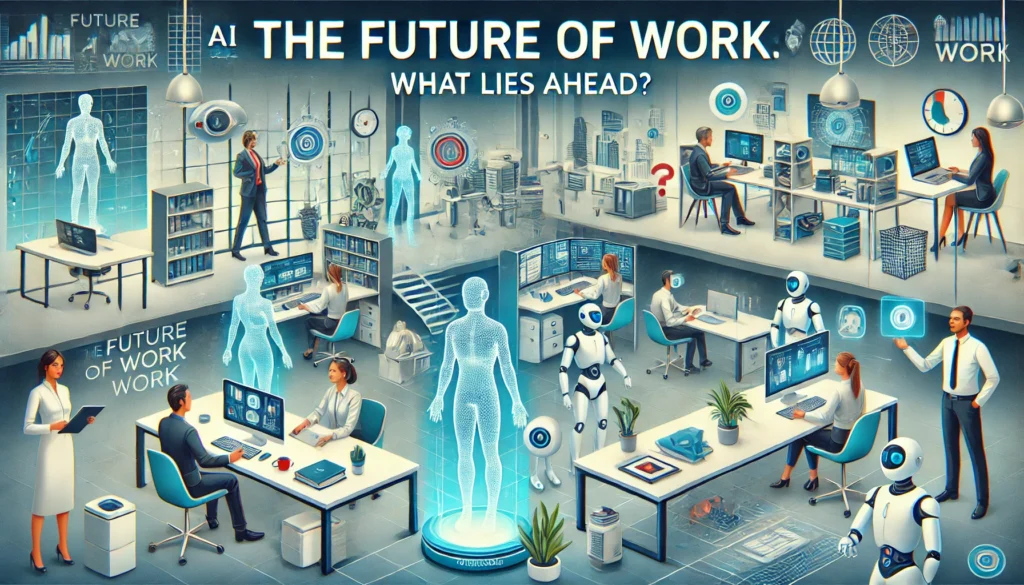
Automation is no longer a futuristic concept—it is here, transforming industries and redefining the way people work. But what does this mean for your job? Will automation replace you, or can you adapt to the changing landscape? In this article, we explore how automation is reshaping the workforce, which jobs are at risk, and how you can secure your career in the age of automation.
What is Automation and Why is it Growing?
The Definition of Automation
Automation refers to the use of technology to perform tasks that were previously carried out by humans. This includes robotics, artificial intelligence (AI), and machine learning systems that can execute repetitive or complex tasks efficiently.
Key Technologies Driving Automation
Some of the key innovations behind automation include:
- Artificial Intelligence (AI) and Machine Learning
- Robotics and Industrial Automation
- Natural Language Processing (NLP) for chatbots and virtual assistants
- Internet of Things (IoT) for smart factories and workplaces
The History of Automation in the Workplace
Automation has been evolving for centuries, from the industrial revolution’s steam-powered machines to today’s sophisticated AI-driven systems. With advancements in computing power and data analysis, automation is now more capable than ever of handling cognitive tasks once thought to be exclusively human.
Industries Most Affected by Automation
Automation is revolutionizing multiple sectors, including:
Manufacturing and Industrial Jobs
Factories have long used automation, but today, advanced robotics and AI-driven quality control systems are reducing the need for human labor even further.
Retail and E-commerce
Self-checkout machines, AI-driven inventory management, and chatbots are minimizing human roles in retail.
Healthcare and Medical Services
AI-powered diagnostics and robotic-assisted surgeries are supporting, rather than replacing, healthcare professionals.
Transportation and Logistics
Autonomous vehicles and AI-powered supply chain management are changing the face of transportation and logistics.
Finance and Banking
Automation in banking includes AI-driven financial advisors, fraud detection, and automated customer support.
Hospitality and Customer Service
Hotels are experimenting with automated check-ins, robot room service, and AI-powered virtual assistants.
Jobs Most at Risk Due to Automation

Automation threatens roles that involve repetitive and predictable tasks, such as:
- Data Entry and Clerical Work
- Customer Service and Call Centers
- Factory and Assembly Line Work
- Fast Food and Restaurant Industry
- Traditional Journalism and Reporting
Jobs That Are Safe (For Now)
Certain jobs are less susceptible to automation due to their complexity, creativity, or human-centric nature:
- Creative Professions (Writers, Artists, Designers)
- Healthcare Professionals (Doctors, Nurses, Therapists)
- Skilled Trades and Technicians (Electricians, Plumbers)
- Human-Centric Roles (Teaching, Counseling, Social Work)
- Emerging Tech Jobs (AI Development, Cybersecurity, Cloud Computing)
The Pros and Cons of Automation in the Workforce
Pros:
- Increased Productivity and Efficiency
- Cost Savings for Businesses
- Greater Accuracy and Reduced Human Error
Cons:
- Job Displacement and Economic Inequality
- The Need for Reskilling and Adaptation
- Ethical Concerns Around AI Decision-Making
How Employees Can Adapt to Automation
Workers can stay relevant by:
- Learning New Skills and Upskilling
- Embracing Technological Literacy
- Developing Soft Skills like Emotional Intelligence and Critical Thinking
- Seeking Careers in Automation-Resistant Fields
The Role of Governments and Businesses in Workforce Transformation
Governments and corporations must support workers by:
- Implementing Policies to Support Workers
- Investing in Reskilling and Training Programs
- Addressing the Ethical Considerations of Automation
The Future of Work: What Lies Ahead?

Automation will likely lead to:
- Hybrid Work Environments where AI assists human workers
- Greater Collaboration Between Humans and AI
- The Possibility of Universal Basic Income to support displaced workers
Conclusion
While automation is transforming the workforce, it does not necessarily mean widespread job losses. Instead, it signals a shift in required skills and job roles. By staying adaptable, learning new skills, and focusing on areas that AI cannot easily replace, workers can thrive in an automated future.
FAQs
1. Will automation replace all jobs?
No, but it will reshape industries and require workers to adapt by learning new skills.
2. Which jobs are most at risk from automation?
Repetitive and predictable jobs, such as data entry, customer service, and assembly line work, are most vulnerable.
3. How can workers prepare for automation?
By upskilling, developing soft skills, and staying updated with technological advancements.
4. What industries will benefit the most from automation?
Healthcare, finance, and logistics will benefit from increased efficiency and accuracy.
5. Will AI create new job opportunities?
Yes, AI will generate new roles in data science, AI ethics, and tech-driven industries.




1 thought on “Is Your Job Truly Safe? How Automation Is Reshaping the Workforce 2025”